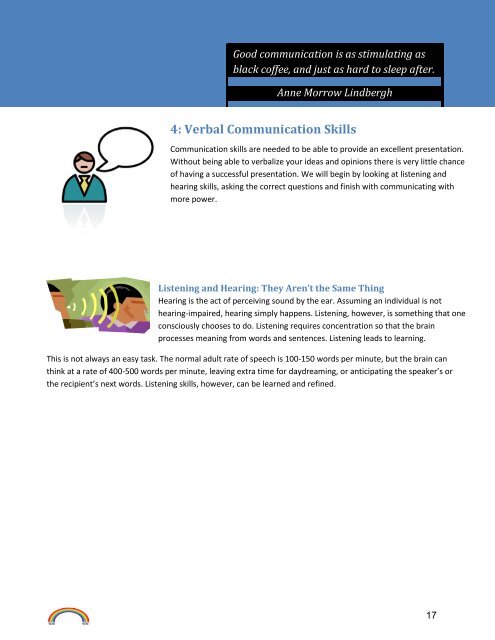2018 Hans Kai Facilitator Resources
- No tags were found...
Create successful ePaper yourself
Turn your PDF publications into a flip-book with our unique Google optimized e-Paper software.
2 0 1 8 H A N S K A I F A C I L I T A T O R R E S O U R C E S<br />
Planning for a Facilitated Meeting<br />
The following are some things you can do in preparation for a facilitated meeting:<br />
• Set the venue. Facilitation works best if the venue is conducive to a comfortable discussion. Chairs<br />
arranged in a circle are always better than a classroom set-up, to emphasize equality among all members.<br />
Privacy is a must. If you need to use materials like flip chart paper, markers, and nametags, prepare them<br />
beforehand.<br />
It also helps to prepare not just the venue of the meeting proper, but the surrounding areas as well. It’s not<br />
unusual for facilitators to invite meeting participants to break out in smaller discussion groups, or even<br />
“take a walk” to blow off steam. As such, preparations for these activities should be made before the<br />
meeting.<br />
• Set aside time. Facilitated meetings should not be rushed; minding process is<br />
the reason why it works well. The length of a facilitated meeting<br />
depends on<br />
the agenda and the number of participants, but the recommended<br />
duration is<br />
30 minutes to one hour.<br />
• Prepare a Facilitation Plan. As a facilitator, never go blindly into a meeting.<br />
While an experienced facilitator would likely have enough skills enough<br />
to “wing<br />
it”, it always pay to be prepared.<br />
Make sure you know what the objective of the meeting is, expectations of the group and/or the<br />
organization from you, and the profile of your participants. Decide ahead how you are going to begin and<br />
end the meeting, and how you plan to manage the meeting itself. For this process, it helps if you research<br />
and gather relevant information beforehand (more on this later), and prepare a Facilitation Plan (see the<br />
next page).<br />
• Make plans for documentation. To better be able to follow up, and identify process issues in a group, it<br />
always helps if a meeting is documented. Typically, groups assign a secretary to take minutes of a meeting.<br />
However, traditional minutes usually deal with just content. For best results, consider assigning a process<br />
observer: someone to document process elements in a group.<br />
• Prepare Psychologically. Lastly, it’s important that you take the time to prepare internally if you’re going to<br />
facilitate a meeting. Being a facilitator can be a mentally, sometimes even emotionally, demanding job. You<br />
want to make sure that you are in a relaxed frame of mind before you facilitate. Deal with personal issues<br />
that can interfere with the process, and note your biases and assumptions about the group or the subject of<br />
the meeting.<br />
Below are samples of meeting guides provided to <strong>Hans</strong> <strong>Kai</strong> 4 Tran facilitators each month:<br />
15

















